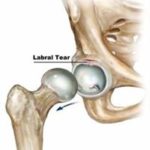Can Sprengel Shoulder Be Fixed Without Surgery?
Ever heard of Sprengel Shoulder? Don’t worry if you haven’t it’s a rare condition, but when it shows up, it doesn’t go unnoticed. Sprengel’s deformity, a congenital issue where one shoulder blade sits higher than the other, can mess with your posture, limit arm movement, and in some cases, affect your self-confidence.
So, can Sprengel Shoulder be fixed without surgery? In many mild to moderate cases, yes with early diagnosis, focused physical therapy, and consistent care, surgery isn’t always the first step. Curious to know how?
Let’s get into this topic and explore your options.
What Exactly Is Sprengel Shoulder and Why Should You Care?
Sprengel Shoulder, also known as Sprengel’s deformity, is a rare congenital condition where one shoulder blade (scapula) sits abnormally higher than the other. This occurs when the scapula fails to descend into its correct position during fetal development. Often diagnosed in childhood, it’s sometimes mistaken for poor posture until a more detailed evaluation reveals the underlying issue.
Now, why should you care? Because it’s more than a cosmetic concern. In many cases, the elevated scapula restricts shoulder mobility particularly overhead arm movement which can interfere with daily activities, sports, or even simple tasks like reaching a shelf. While mild cases of Sprengel Shoulder may go unnoticed, moderate to severe forms can significantly impact quality of life and may be associated with other conditions like Klippel-Feil Syndrome. Early recognition and proper management are key to preventing long-term functional limitations.
What’s the Game Plan for Sprengel Shoulder Treatment?
While surgery is an option, especially in severe cases, not everyone’s ready to go that route. And hey, that’s fair. The good news? Non-surgical options do exist, and they’re worth exploring especially early on. So, how do you handle Sprengel shoulder treatment without heading straight to the OR?
Physical Therapy: Your First Line of Defense
A solid physiotherapy routine can work wonders. The goal? Improve strength, posture, and shoulder mobility. A trained physio can design a plan that gently stretches tight muscles and strengthens the weaker ones.
- Scapular mobility exercises
- Shoulder blade stabilization moves
- Posture correction techniques
- Range of motion workouts
Consistency is the name of the game here. It won’t work overnight, but hey, slow and steady wins the race.
Massage Therapy & Manual Mobilization
Yep, you heard right. A good sports massage can ease muscle tightness and help improve blood flow around the shoulder. Some therapists even use myofascial release or gentle joint mobilizations to help with alignment. It’s not magic, but it sure feels close on a stiff day.
What Is the Difference Between Klippel-Feil and Sprengel?
This one trips up a lot of people, so let’s clear the air.
- Klippel-Feil Syndrome is a condition where two or more neck vertebrae are fused together. It often limits neck movement and can lead to other bone or organ issues.
- Sprengel’s Shoulder, on the other hand, affects the shoulder blade, not the spine.
While the two sometimes show up together, they’re not the same thing. Think of it like this they might crash the same party, but they arrived in separate cars.
Can You Actually Avoid Surgery for Sprengel Shoulder?
Short answer: sometimes, yes. But, and it’s a big but, it really depends on how severe the case is, when it’s diagnosed, and whether you can find the best physiotherapist to guide your treatment.
Here’s how it usually breaks down:
Mild to Moderate Cases:
- Respond well to physical therapy
- May show visible improvement over time
- Don’t always need surgery
Severe Cases:
- Surgery might be the best option to improve movement
- Especially if shoulder function is limited or causing pain
So, if you’re wondering whether you can skip the surgery start with a specialist evaluation. A pediatric orthopedic surgeon or a physiotherapist experienced in congenital conditions can give you the lowdown.
FAQs
- What is Sprengel’s Shoulder?
A. It’s a birth defect where one shoulder blade is positioned higher than normal. It may affect movement and posture, depending on the severity. - Can Sprengel Shoulder go away on its own?
A. Unfortunately, no. It doesn’t go away completely, but the symptoms can improve with proper treatment like physical therapy. - What is the difference between Klippel-Feil and Sprengel?
A. Klippel-Feil affects the neck bones (vertebrae), while Sprengel’s affects the shoulder blade. They’re different conditions, though they can appear together. - Is Sprengel Shoulder painful?
A. Not always. Some people have no pain, while others may feel tightness or discomfort, especially when lifting their arms. - At what age is Sprengel Shoulder usually treated?
A. Most cases are spotted in childhood. Treatment ideally starts early but even adults can benefit from therapy.
Conclusion: What’s the Final Word?
Let’s be real surgery isn’t everyone’s first choice, and thankfully, it’s not always necessary. With early diagnosis and a consistent non-surgical approach, Sprengel Shoulder treatment can often lead to significant improvement. But instead of relying on endless online searches, the smartest move is to get a proper evaluation from a medical expert.
If you’ve been experiencing limited shoulder movement or unusual posture, and you’re wondering, “What is Sprengel’s Shoulder?” it’s time to take action. The earlier you begin, the better your chances of avoiding surgery altogether. In many mild to moderate cases, dedicated therapy and guided care make a real difference. So don’t wait for the pain or stiffness to get worse take that first step toward recovery today.
Resources: https://en.wikipedia.org/wiki/Sprengel%27s_deformity











